Your Search for Technology Driven Sales Partner Ends Here
Don't wanna be here? Send us removal request.
Text
Boost Sales & Cut Costs with FTTDMS for Van Sales in India
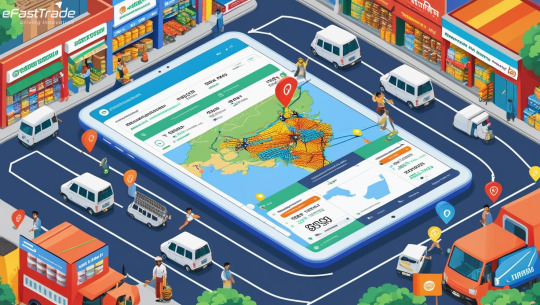
Van sales are the heartbeat of India’s fast-moving retail landscape. From delivering biscuits to the smallest kirana store in a village to restocking urban supermarkets, van sales ensure products reach every corner of the country. But let’s face it — managing van sales manually is a logistical headache.
If you're still handling your van sales using paper records, phone calls, and spreadsheets, it’s time for a digital upgrade. An FTTDMS for Van Sales in India can transform the way you do business.
Why Van Sales Still Matter in India
In India, more than 70% of retail sales happen through traditional channels. That means your delivery vans are still the lifeline to thousands of local stores. But the competition is tough, margins are tight, and customer expectations are growing.
A Distribution Management System (DMS) helps you stay ahead by simplifying your daily operations and helping you sell more—without increasing overheads.
What Exactly is a DMS for Van Sales?
Think of a DMS as the control center for your van sales business. It’s a cloud-based tool that automates everything from billing to stock tracking, route planning to payment collection. Your sales team can access it via mobile while you manage everything from the backend with real-time visibility.
The Common Problems in Traditional Van Sales
If you’re running van sales the old way, these challenges probably sound familiar:
Inventory mismatch and frequent stockouts
Manual billing and paper receipts
Route inefficiencies and wasted fuel
Difficulty tracking team performance
Delays in collecting payments
These not only hurt your bottom line—they also damage your customer relationships.
How a DMS for Van Sales in India Solves These Problems
Here’s what you get with a solid DMS platform:
Real-time Stock Visibility
Always know what’s in each van. Prevent stockouts and eliminate wastage.
Mobile Billing & Invoicing
Generate GST-compliant invoices on the spot and send them via WhatsApp or email.
Route Optimization
Smart GPS tracking ensures your vans follow the most efficient paths—saving time and fuel.
Integrated Payments
Accept UPI, card, or cash—and automatically update your system when payments are received.
Digital Catalog & Discounts
Let your reps show product images, prices, and offer personalized discounts from their phones.
Big Benefits: Sales Up, Costs Down
Boost Sales
Suggestive selling based on past orders
Quicker billing = more time for extra stops
Data-driven promotions for top buyers
Cut Operational Costs
No printing invoices
No manual data entry
No overstocking or unnecessary returns
Over time, these efficiencies add up to big savings and noticeable growth.
What About Accounting?
Great question. Many DMS tools integrate with accounting software like Tally, so your sales, returns, and payments sync automatically—reducing errors and end-of-month headaches.
Empower Your Sales Team with Mobile Tools
Give your team the tools they need—literally in their hands. A mobile app allows them to:
View targets and daily performance
Mark attendance
Collect and record payments
Show live inventory and product details
Even better? It works offline, so spotty networks in rural areas aren’t a problem.
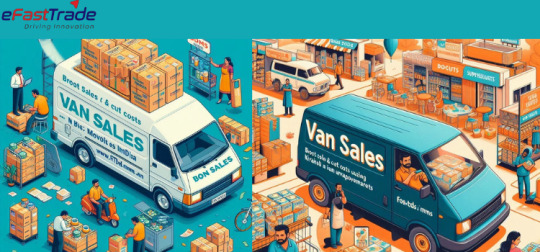
Reports That Make Decisions Easy
Want to know which route brings in the most revenue? Which rep is hitting targets? Which product is your top seller?
Your DMS provides all that data—live dashboards, sales trends, and custom reports—so you can make smarter decisions every day.
Is It Difficult to Implement?
Not at all. Modern DMS solutions are:
Easy to use
Support regional languages
Come with training and support
Whether you're a tech expert or a first-time user, a good DMS provider will help you get started smoothly.
Final Thoughts: The Time to Go Digital is Now
An FTTDMS for Van Sales in India isn’t just software—it’s a business partner. One that helps you sell faster, serve better, and grow bigger.
With benefits like cost savings, improved customer relationships, and better decision-making, investing in a DMS today can set your business up for a stronger tomorrow.
0 notes
Text
Boost Your Amazon Business: How to Use Transaction Reports for Smarter Decisions

Running a business on platforms like Amazon.in requires constant evaluation and decision-making to maximize profitability. One of the most valuable tools at your disposal is the transaction report. This report provides detailed insights into your business operations, enabling you to make informed decisions about pricing, inventory management, marketing, and more.
Here, we delve into how to effectively read and utilize transaction reports to grow your Amazon business while keeping track of essential metrics.
Understanding the Transaction Report
Transaction reports contain detailed records of your sales, refunds, fees, and more, helping you analyze your business performance. It’s a goldmine of data that, when read effectively, can guide crucial decisions. Let’s explore the various actionable insights you can derive from this report:
Deciding the Selling Price of Products (SKU-wise)
Analyze the revenue generated and associated costs for each SKU (Stock Keeping Unit) to determine its profitability.
Adjust prices dynamically to ensure competitiveness while maintaining margins.
Improving High-Return Products
Identify products with frequent returns and investigate reasons for customer dissatisfaction.
Decide whether to improve the product, modify its listing, or discontinue it altogether.
Reconciling Refunds
Cross-check refunds issued by Amazon with your records to ensure accuracy.
Address discrepancies promptly by writing to Amazon’s support team.
Understanding SKU Performance
Classify SKUs into top-selling, normal-selling, and low-selling categories.
Use these classifications for inventory management and promotional strategies.
Inventory Management Decisions
Decide whether to store inventory at Fulfilment by Amazon (FBA) or manage it through self-shipping based on sales volume and storage costs.
Optimize inventory levels to prevent stockouts or overstocking.
Campaign Cost Allocation
Analyze campaign costs SKU-wise to understand which products deliver the best ROI.
Allocate budgets effectively to maximize revenue and orders.
Geographic Insights
Understand sales performance by state and city to identify high-demand regions.
Tailor marketing campaigns or stock allocation for these regions.
Evaluating Net Payables
Calculate net payables after accounting for sales, refunds, fees, and other deductions.
Determine whether your business is operating at a profit or loss.
Tracking Price and Campaign Changes
Monitor the impact of price adjustments or marketing campaigns on orders and revenue.
Use this data to refine future strategies.
Monthly Trends Analysis
Study monthly trends for individual products and overall business to predict demand and plan inventory and campaigns.
Use this data for forecasting and seasonal adjustments.
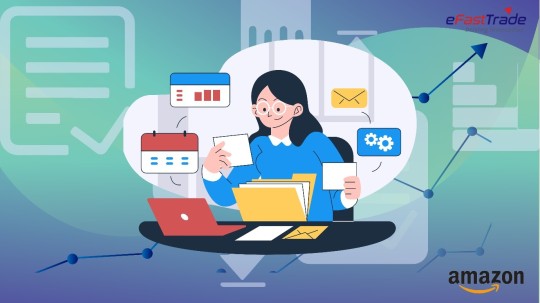
How to Use Transaction Reports for Effective Decision-Making
Step 1: Organize the Data
Export the transaction report and organize it in a spreadsheet or analytics tool to prepare reconciliation reports. Ensure you separate data points like SKUs, revenue, fees, refunds, and campaign costs for better analysis.
Step 2: Focus on Key Metrics
Identify the metrics most relevant to your goals, such as:
Profit margin per SKU
Refund rate
Campaign ROI
Inventory turnover rate
Step 3: Visualize the Trends
Use charts and graphs to visualize trends. For instance, a line graph showing monthly sales for your top SKUs can help you spot demand fluctuations.
Step 4: Take Action
Once you’ve identified patterns and insights, take actionable steps such as:
Repricing products
Adjusting inventory levels
Modifying ad budgets
Real-World Example: Boosting Sales with Transaction Insights
Let’s say you’re selling kitchen appliances on Amazon.in. After analyzing the transaction report, you notice:
Top-selling SKU: A hand blender has consistently high sales and low returns. Increase inventory and run targeted ad campaigns.
Low-selling SKU: A toaster oven has low sales and high storage fees. Run a discount campaign to clear stock or consider discontinuation.
Regional Insight: Sales are highest in metropolitan cities. Allocate more stock and marketing resources to these areas.
By implementing these decisions, you’ll optimize your resources and boost profitability.
Tips for Maximizing the Value of Transaction Reports
Review Regularly
Make it a habit to review transaction reports weekly or monthly to stay updated on business performance.
Leverage Automation
Use tools like Amazon Seller Central’s analytics or third-party software to automate data analysis.
Stay Informed
Keep learning through online courses, webinars, and forums for sellers to sharpen your skills.
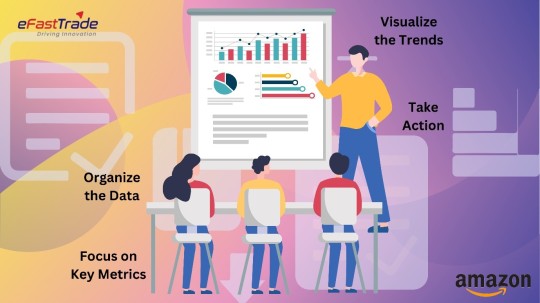
Final Thoughts
Transaction reports are more than just data; they’re a roadmap to making informed, strategic decisions for your Amazon business. By understanding and leveraging the insights they provide, you can optimize pricing, manage inventory effectively, and plan targeted campaigns to maximize profitability.
Start analyzing your transaction reports today and take your Amazon business to new heights!
FTT MIS by Fast Trade Technologies Private Limited is a magic tool that decodes transaction report into understandable many pages business report within two minutes in three simple steps. The tool is available at as low as Rs. 499 per download.
Explore FTT MIS to decode your Amazon Transaction Reports effortlessly with 100% accuracy: https://efasttrade.com/fttmis/
#AmazonSellingTips#ProfitOnAmazon#AmazonSellerSupport#ProductImprovement#AmazonReconciliation#AmazonRefunds#TopSellingProducts#AmazonInventoryManagement#FBAIndia#SelfShipping#AmazonPPC#MarketingROI#AmazonIndiaInsights#RegionalSelling#AmazonProfitability#BusinessAnalytics#DynamicPricing#CampaignManagement#SalesTrends#BusinessForecasting#SellingOnAmazon#AmazonBusinessSuccess#AmazonSellerInsights
0 notes
Text
TDS & TCS Explained: How to Claim and Maximize Profits as an Amazon Seller

As an Amazon seller in India, you focus on growing your business and serving your customers. But are you fully using the tax benefits available to you, such as claiming Tax Deducted at Source (TDS) and Tax Collected at Source (TCS)? Many sellers miss out on these claims and lose money. In this blog, we explain the process, benefits, and key strategies for claiming TDS and TCS on Amazon.in, helping you maximize earnings and simplify tax compliance.
What are TDS and TCS, and Why Should You Care?
Tax Deducted at Source (TDS) is a tax mechanism where a percentage of your income is deducted by Amazon before paying you and is deposited with the government.
Tax Collected at Source (TCS) is the tax Amazon collects from customers and deposits on your behalf when goods or services are sold through the platform.
These taxes are linked to your PAN or GSTIN and can be claimed as credits while filing your Income Tax Return (ITR) or GST return. Failing to claim these credits could lead to higher tax outflows, eating into your hard-earned profits.
Why Amazon Sellers Often Miss Out on Claiming TDS and TCS
Lack of Awareness: Many sellers don’t know they’re eligible to claim these credits.
Complexity in Reconciliation: Sellers often struggle to match Amazon reports with their financial records.
Mismanagement of Documentation: Without proper records, tracking deductions and collections becomes a hassle.
Common Challenges Sellers Face
Dependence on External Help: Sellers often depend on CAs or service providers to calculate and claim TDS and TCS.
Time-Consuming Reconciliation: Matching Amazon reports with financial records manually can be tedious.
Missed Opportunities: Without proper claims, sellers pay more tax than necessary, reducing profitability.
Step-by-Step Guide to Claiming TDS and TCS on Amazon.in
Understanding the Process
TDS: Amazon deducts TDS under Section 194-O of the Income Tax Act. The rate is typically 1% on the gross amount credited to your account.
TCS: Amazon collects TCS at 1% under GST law for taxable supplies made through the platform.
Downloading TDS and TCS Reports
Log in to your Amazon Seller Central account.
Navigate to the Reports section and click on Tax Document Library.
Download your TDS Certificate and TCS Report for the relevant financial year.
Filing Your Income Tax Return (ITR)
Include the TDS amount mentioned in the TDS certificate as part of your taxable income.
Enter the corresponding TDS credit in the applicable section while filing your ITR.
Cross-verify TDS details with Form 26AS available on the Income Tax Department’s website.
Filing Your GST Return
Log in to the GST portal and select GSTR-2A or GSTR-2B to view auto-populated TCS details.
Verify these details with your Amazon TCS Report.
Claim the TCS credit while filing GSTR-3B, ensuring it matches with your sales and tax invoices.
Maintaining Proper Records
Keep track of invoices, transaction reports, and Amazon TDS/TCS documents for auditing purposes.
Use accounting software to automate reconciliation between Amazon reports and your books of accounts.

Why Claiming TDS and TCS Matters
Reduces Tax Liability: Claiming TDS and TCS credits lowers your overall tax payable, directly impacting your bottom line.
Prevents Double Taxation: Without claiming, the same income could be taxed twice, once at source and again at the time of filing your returns.
Improves Cash Flow: Accurate claims ensure you’re not paying more tax upfront, improving cash flow for business operations.
Boosts Financial Accuracy: Regularly claiming credits helps in maintaining error-free financial records and compliance.
Avoids Penalties: Proper tax compliance eliminates the risk of penalties from tax authorities.
Tips for Hassle-Free Claiming of TDS and TCS
Regularly Reconcile Reports: Download and review TDS/TCS reports monthly to avoid year-end surprises.
Hire a Tax Professional: If the process feels overwhelming, consider engaging a chartered accountant to manage claims.
Leverage Technology: Use accounting tools like Zoho Books, Tally, or QuickBooks for seamless reconciliation and tax filing.
Monitor Form 26AS and GST Portal: Regularly check for discrepancies between Amazon data and government records.
Understand Applicable Thresholds: TDS is only deducted if your gross sales exceed ₹5 lakhs annually on Amazon. Be aware of such thresholds.
Common Mistakes to Avoid
Ignoring Reports: Not downloading and reviewing TDS/TCS reports can lead to missed claims.
Mismatch in Data: Failing to reconcile Amazon data with Form 26AS or GSTR-2B can delay claims.
Not Updating GSTIN: Ensure your GSTIN is correctly updated on Amazon Seller Central to avoid issues with TCS credit.
Late Filing: Missing deadlines for ITR or GST filing can result in forfeiting eligible credits.

So What is The Solution
Here’s the good news: with FTT MIS by Fast Trade Technologies Private Limited, you can generate detailed reconciliation reports within 2 minutes using just three easy steps. The cost is much less than you’d think, and you can explore the tool with two months of free* reports! You can access the same at: https://efasttrade.com/fttmis/.
How FTT MIS Enhances Your Process
Time-Saving: Automated reconciliation eliminates hours of manual effort.
Cost-Effective: Affordable pricing compared to hiring external service providers.
Comprehensive Reports: Detailed insights on fees, deductions, returns, and refunds.
User-Friendly: Intuitive interface designed for Amazon sellers.
Conclusion
Claiming TDS and TCS as an Amazon seller goes beyond compliance—it helps you maximize profitability and maintain a financially healthy business. By following the outlined steps and leveraging the benefits, you can simplify your tax processes and focus on growing your business.
If you’re unsure about any step, consult a tax professional or use automation tools to streamline the process. Remember, every unclaimed credit is a missed opportunity to save money!
You can explore FTT MIS here for detailed and accurate reports: https://efasttrade.com/fttmis/.
#AmazonIndiaTips#AmazonSellersGuide#TaxSavingsForSellers#AmazonTDSClaim#AmazonTCSCredit#TaxComplianceTips#AmazonSellerTaxation#TDSAndTCSGuide#EcommerceTaxTips#SellerTaxBenefits
0 notes
Text
Unlocking Insights: How to Read and Use Transaction Reports

In the fast-paced world of e-commerce, Amazon sellers must harness every available resource to stay competitive and profitable. One of the most valuable tools at their disposal is the transaction report, which provides an in-depth look at the financial and operational aspects of their business.
From understanding SKU-specific performance to tracking tax liabilities, a well-interpreted transaction report is a goldmine of actionable data. In this blog, we will explore how to decode Amazon’s transaction report and use it for strategic decision-making.
The Importance of Transaction Reports
Transaction reports serve as the backbone for analyzing your Amazon business. They include data on sales, refunds, fees, and taxes—everything you need to evaluate your performance and plan ahead. Here are some decisions you can make based on these reports:
Adjust pricing SKU-wise
Improve high-return products
Track refunds and ensure accurate reconciliation
Optimize inventory management
Allocate campaign costs effectively
Key Headers in Amazon Transaction Reports
Let’s break down the major headers in Amazon’s transaction reports and how they guide critical decisions.
Date/Time
Trace transactions to specific periods for trend analysis.
Helps in identifying peak sales days for targeted campaigns.
Settlement ID
Enables reconciliation of payouts with bank deposits.
Essential for accurate accounting.
SKU (Stock Keeping Unit)
Tracks inventory performance at the product level.
Identify top-selling, normal, and low-performing SKUs to strategize stock allocation.
Product Sales
Represents revenue from product sales.
Use it to calculate profit margins after deducting associated costs.
Fulfillment
Differentiates between seller-fulfilled and FBA orders.
Evaluate the cost-effectiveness of each fulfillment method.
Order City, State, and Postal Code
Understand geographic trends in sales.
Plan region-specific campaigns or stock placement.
Promotional Rebates
Analyze the impact of discounts and promotions on your bottom line.
Helps fine-tune future marketing strategies.
Selling Fees and FBA Fees
Track referral and fulfillment fees to evaluate profitability.
Spot areas for cost optimization.
Tax Heads (TCS, GST, etc.)
Ensure compliance with tax regulations by monitoring liabilities.
Reconcile these figures with tax filings.
Total
Summarizes net earnings or expenses for each transaction.
The ultimate metric for financial health

Decoding Insights for Strategic Decisions
SKU Performance Analysis
Transaction reports reveal SKU-wise sales data, allowing sellers to:
Identify bestsellers and invest in stock replenishment or marketing campaigns.
Phase out low-performing SKUs.
Example: If a specific mobile accessory SKU consistently drives high sales, allocate more resources to promote it.
Monitoring Refunds and Returns
High return rates can erode profits. Use transaction reports to:
Pinpoint SKUs with frequent returns.
Investigate customer feedback to address quality issues.
Example: If a particular SKU has an unusually high return rate, consider revising the product description or improving packaging.
Optimizing Campaign Budgets
Use transaction data to assess the ROI of marketing campaigns:
Allocate ad spend to high-ROI SKUs.
Evaluate the impact of discounts or promotions on sales.
Example: If a campaign on a kitchen appliance boosts orders significantly, replicate the strategy for similar products.
Regional Market Targeting
Transaction reports provide insights into geographic sales performance:
Identify top-performing states or cities.
Launch region-specific campaigns or stock adjustments.
Example: If Bengaluru and Mumbai lead sales for a home décor product, focus your marketing efforts there.
Fulfillment Method Decisions
Compare costs and benefits between FBA and self-fulfillment:
Use FBA for high-demand SKUs to leverage Amazon’s logistics.
Opt for self-shipping for low-margin products.
Example: A low-cost item with slim margins might be better suited for self-shipping to avoid FBA fees.

Streamlining Analysis with Tools
Manually analyzing transaction reports can be time-consuming. Tools like FTT MIS by Fast Trade Technologies Private Limited simplifies this process:
Generate analyzed reports in minutes.
Automate reconciliation and tax computations.
Identify high-cost areas at a glance.
Tips for Maximizing the Value of Transaction Reports
Regular Reviews
Schedule weekly or monthly reviews to stay updated on performance.
Leverage Visualization
Use graphs or dashboards to identify trends easily.
Combine Reports
Merge data from transaction reports with other sources, like campaign analytics, for holistic insights.
Act on Insights
Don’t just analyze; implement strategies based on the findings.
Final Thoughts
Transaction reports are more than just spreadsheets; they are the compass for steering your Amazon business toward profitability. By decoding these reports effectively, sellers can uncover hidden opportunities, avoid unnecessary costs, and ensure a thriving business.
Experience Quick and 100% Accurate Reconciliation Reports here in 2 Minutes! 2 Months Reports Free on Sign-Up!
Explore here: https://efasttrade.com/unlocking-insights/
#ecommerce#amazon#ecommerceinindia#onlineservices#amazonseller#b2b#eFastTrade Technologies#FTT MIS#AmazonSellingTips#ProfitOnAmazon#SalesTrends#https://efasttrade.com/unlocking-insights/#TopSellingProducts#InventoryManagement#AmazonProfitability#FBAIndia#SelfShipping#RegionalSelling#AmazonIndiaInsights#AmazonFeesAnalysis#GSTCompliance#AmazonTaxes#BusinessAnalytics#AmazonSellerSupport#ProductImprovement#AmazonPPC#MarketingROI
0 notes
Text
Decoding Different Expense Heads in Amazon Transaction Report
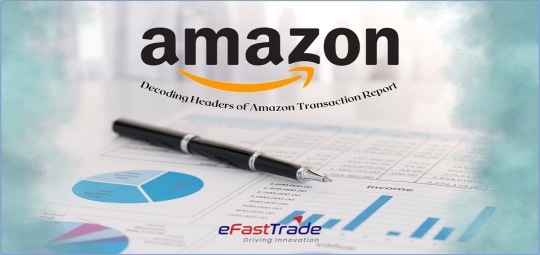
For Amazon sellers, understanding the detailed transaction report provided by the platform is a key factor in effective financial management. The transaction report is an invaluable tool for tracking expenses, identifying profits, and ensuring accurate reconciliation. However, deciphering the various expense heads listed in the report can often feel overwhelming. In this blog, we will break down the different components of Amazon’s transaction report and provide actionable insights to help you manage your seller account effectively.
Whether you are a seasoned Amazon seller or just starting your e-commerce journey, understanding the finer details of this report is crucial for managing your business operations. Let’s dive into the core elements of the Amazon transaction report and learn how to decode the complex expense structure.
Key Headers in the Amazon Transaction Report
Amazon’s transaction report contains multiple headers that categorize different aspects of your sales and expenses. Below, we’ll discuss the major headers in detail:
Date/Time
This field represents the date and time when the transaction occurred. It helps sellers trace specific transactions to particular time periods for analysis and reconciliation.
Settlement ID
This unique ID is assigned to each settlement period, enabling sellers to track their earnings and expenses during a specific payout cycle. This is particularly useful for reconciling with your bank statements.
Type
The “type” column defines the nature of the transaction—whether it’s a product sale, refund, or adjustment. Understanding the transaction type is essential for categorizing revenues and expenses.
Order ID
Every order processed through Amazon is associated with a unique order ID. This makes it easier to track the status of individual orders, especially when resolving customer disputes.
SKU (Stock Keeping Unit)
This is your internal identifier for products. Monitoring SKUs helps track inventory levels and identify top-performing products.
Description
The description provides further details about the transaction. For example, it could specify whether the entry pertains to a refund, a promotional rebate, or a shipping charge.
Quantity
This column specifies the number of units sold or returned for a particular transaction. Monitoring this helps sellers understand sales trends and manage inventory.
Marketplace
The marketplace field indicates the Amazon site where the transaction occurred. For sellers operating in multiple regions, this information is critical for identifying location-specific performance metrics.
Account Type
This field differentiates between seller-fulfilled and Amazon-fulfilled orders. Understanding this distinction helps sellers analyze their costs and profit margins for different fulfillment methods.
Fulfillment
The fulfillment column specifies whether the order was fulfilled by Amazon (FBA) or the seller. Each option comes with its own cost structure, which is broken down in subsequent headers.
Order City, State, and Postal Code
These fields provide details about the customer’s location. Sellers can use this data for market segmentation and targeted marketing campaigns.

Product Sales
This represents the revenue generated from the sale of products. It’s the most straightforward figure to track but must be reconciled against other expenses to calculate net profit.
Shipping Credits
Shipping credits are the amounts Amazon reimburses to the seller for shipping costs. These credits are applicable for seller-fulfilled orders.
Gift Wrap Credits
If you offer gift wrapping, the fees paid by customers for this service are recorded under this header.
Promotional Rebates
Promotional rebates represent the discounts applied to customer orders. Sellers must track these amounts to understand the cost of promotions on overall profitability.
Total Sales Tax Liable
This column reflects the total GST liability (before TCS adjustments) on each transaction. Proper monitoring ensures compliance with tax regulations.
TCS-CGST, TCS-SGST, TCS-IGST
These columns reflect the Tax Collected at Source (TCS) components for Central GST (CGST), State GST (SGST), and Integrated GST (IGST). Sellers must reconcile these figures with their GST filings.
TDS (Section 194-O)
This column specifies the Tax Deducted at Source (TDS) as per Section 194-O of the Income Tax Act. It is crucial to track this for accurate tax reporting.
Selling Fees
Amazon charges various selling fees, including referral fees and closing fees, which are recorded under this header. Analyzing these costs is essential for calculating net profit margins.
FBA Fees
If you’re using Fulfillment by Amazon, this column lists all associated costs, such as storage and fulfillment fees.
Other Transaction Fees
This header includes fees such as high-volume listing charges or long-term storage fees. Monitoring these costs helps avoid unnecessary overheads.
Other
Miscellaneous charges and credits that don’t fall under specific categories are recorded here. It’s essential to review this section for any unexpected expenses.
Total
This column summarizes the total cost or revenue for each transaction. It’s the final figure sellers should review for reconciliation. Why Monitoring These Expense Heads is CriticalEffective financial management is the backbone of any successful Amazon business. By monitoring the above expense heads, sellers can:
Identify high-cost areas and reduce unnecessary expenses.
Reconcile transactions accurately and avoid financial discrepancies.
Evaluate the effectiveness of promotional campaigns and discounts.
Ensure compliance with tax regulations.
Gain insights into product and location-specific performance.
How FTT MIS Tool Simplifies Reconciliation

Manually reconciling Amazon’s transaction reports can be tedious and error-prone. FTT MIS by Fast Trade Technologies Private Limited simplifies this process, generating well-analyzed reconciliation reports in just 2 minutes and 3 simple steps. With its user-friendly interface and robust analytics, FTT MIS is the perfect solution for Amazon sellers seeking efficient financial management.
Explore FTT MIS to decode your Amazon Transaction Reports effortlessly with 100% accuracy: https://efasttrade.com/fttmis/
#ecommerce#ecommerceinindia#amazon#onlineservices#fasttrade#amazonseller#business#reconciliationreports#amazonmis
0 notes
Text
Why Understanding Transactions is Key to Success on Amazon Marketplace

In the ever-expanding world of eCommerce, Amazon reigns supreme as one of the most popular marketplaces globally. For sellers, it is a platform teeming with opportunities—a virtual goldmine of customers eagerly awaiting their next purchase. However, success on Amazon doesn’t come solely from listing the right products; it requires deep insight into the financial transactions that underpin your business. Understanding your transactions is essential to maintaining profitability, managing expenses, and ensuring long-term growth.
Here, we will explore why proper understanding of transactions is necessary for every Amazon Seller, how tools like FTTMIS by Fast Trade Technologies Private Limited simplify this process, and why staying ahead with clear Reconciliation Reports is a game changer. Online Business Seller Tips
The Importance of Transaction Transparency
Amazon provides sellers with incredible reach and resources, but it also comes with a labyrinth of fees, deductions, and reconciliations that are often tricky to understand. Without a proper understanding of these transactions, sellers risk falling into financial pitfalls. Here’s why:
Fee Complexity: Amazon charges various fees, including referral fees, closing fees, storage fees, advertising fees, and more. While these deductions are necessary for leveraging Amazon’s robust infrastructure, failing to track them can erode profits significantly. Fee Management
Reconciliation Reports: Accurate Reconciliation reports help sellers understand their net payables by Amazon. These reports break down sales, returns, refunds, and other financial transactions. Without them, sellers may face disputes or discrepancies. Accounting Tips
Strategic Pricing: Understanding your fees and charges helps you set the right selling prices. Proper pricing ensures you remain competitive while protecting your Profit Margins. Pricing Strategy
Profit Maximization: Insight into your transactions helps identify which products or SKUs are truly profitable. This data is critical for optimizing Inventory and Marketing efforts. Business Growth
Avoiding Financial Leakages: Errors in fee calculations, unprocessed refunds, or missed payments can significantly impact your bottom line. Regular transaction reviews prevent such losses. Financial Tips
Challenges Sellers Face
While the need for transaction understanding is clear, achieving it is easier said than done. Sellers face several challenges:
Data Overload: Amazon provides vast amounts of data, but sifting through it manually can be overwhelming. Data Management
Complex Fee Structures: With fees varying based on product category, fulfilment type (FBA or self-shipping), and geography, tracking becomes a daunting task. Logistics
Inconsistent Reporting: Amazon’s reports can be difficult to interpret without proper tools, making it challenging to get a clear picture of profitability. Financial Clarity

FTT MIS: Simplifying Seller InsightsOne solution that stands out in addressing these challenges is FTTMIS by Fast Trade Technologies Private Limited. This powerful tool provides Amazon sellers with easy-to-understand business reports, offering a clear and detailed breakdown of all transactions. Here’s how it makes life easier for sellers:
Comprehensive Reports: FTT MIS delivers reports that break down transactions month-wise, order-wise, FBA, and Self-Ship-wise, and even state and city-wise. This granularity ensures sellers have a complete picture of their business performance. Data Insights
Fee Transparency: The tool provides a detailed understanding of every fee levied by Amazon, including hidden charges that might go unnoticed in standard reports. Transparency
Profitability Analysis: Sellers can identify which products yield the highest profits and which drain resources. This insight helps prioritize inventory and marketing efforts. Profitability Analysis
Pricing Insights: By offering clarity on expenses and deductions, FTT MIS empowers sellers to set the right selling prices for their products, ensuring profitability while staying competitive. Smart Pricing
Error Detection: The tool helps detect discrepancies in fee calculations or unprocessed refunds, saving sellers from potential financial losses. Error Prevention
How Transaction Understanding Drives Business SuccessProper understanding of transactions isn’t just about avoiding losses; it’s about driving Business Success. Here’s how:
Data-Driven Decisions: Armed with detailed transaction data, sellers can make informed decisions about Inventory Management, pricing, and marketing.
Competitive Edge: Sellers who understand their costs and profitability are better equipped to outprice competitors without sacrificing margins. Competitive Advantage
Financial Stability: Clear insights into transactions help sellers maintain Cash Flow and plan for future investments.
Customer Satisfaction: Proper reconciliation ensures smooth returns and refunds, enhancing customer trust and loyalty. Customer Experience

Why FTT MIS is a Must-Have for Amazon Sellers
In an industry where margins are razor-thin and competition is fierce, having a tool like FTT MIS is invaluable. Its ability to provide detailed, actionable insights ensures that sellers not only survive but thrive in the marketplace.
Imagine being able to:
Identify the exact fees, month-wise, that you’re paying for each order.
Understand profitability across different regions or fulfilment methods.
Detect errors in manually created reconciliation reports before they affect your bottom line. Smart Business
These capabilities are not luxuries but necessities for any seller serious about scaling their business. Ecommerce Tools
Conclusion
Success on Amazon requires more than just great products and competitive prices. It demands a deep understanding of the financial transactions that fuel your business. By leveraging tools like FTTMIS by Fast Trade Technologies Private Limited, sellers gain the clarity and insights needed to make smarter decisions, maximize Profits, and stay ahead of the competition. Seller Tools
In today’s fast-paced eCommerce environment, ignorance is not bliss—it’s a recipe for failure. Equip yourself with the right tools, embrace the power of reconciliation reports, and join the ranks of successful Amazon sellers who prioritize Transaction Transparency. Amazon Selling Business Tips
0 notes
Text
Reconciliation Reports: The Game Changer for Your Business Growth

In the competitive world of Amazon selling, every rupee counts. The difference between a thriving business and one that struggles often boils down to how well you understand your numbers. Payment reconciliation isn’t just an accounting task—it’s the backbone of a profitable and scalable Amazon business. Without accurate reconciliation, sellers are left navigating blind, unable to pinpoint true profits, hidden expenses, or the most lucrative strategies.
Why Payment Reconciliation is Non-Negotiable for Amazon Sellers Amazon’s payment system is complex, involving various charges, refunds, commission fees, FBA costs, advertising expenses, and more. Without a clear understanding of these details, sellers risk losing significant amounts of money without even realizing it. Here’s why payment reconciliation is crucial:
Accurate Profitability Analysis: Understand your true earnings after deducting all hidden costs.
Strategic Pricing Decisions: Set competitive yet profitable prices for your SKUs.
Expense Tracking: Know your actual expenses, including logistics, advertising, and storage.
Refund Management: Ensure all refunds and reimbursements are properly credited.
Inventory Optimization: Identify high-performing SKUs to scale and low-performing ones to pause. Neglecting payment reconciliation can lead to lost profits, inefficient operations, and missed growth opportunities. The good news? Fast Trade Technologies Private Limited has revolutionized this critical process for Amazon sellers with their cutting-edge FTT MIS Tool.

Transforming Payment Reconciliation with FTT MIS ToolFast Trade Technologies Private Limited has introduced a game-changing solution for Amazon sellers. The FTT MIS Tool simplifies and automates payment reconciliation, delivering unparalleled insights to drive informed business decisions. Here’s how it works:Comprehensive and Detailed MIS ReportsThe FTT MIS Tool provides highly detailed reports for the entire year, broken down into:
Month Wise Analysis: Track your financial performance month by month.
Order Wise and SKU Wise Insights: Understand the profitability of individual SKUs and orders.
State Wise and City Wise Data: Discover the best-performing regions for your products and manage returns more effectively.
FBA vs. Self Ship Analysis: Determine which fulfilment method is more profitable for your business.

Strategic Benefits for Amazon Sellers
Identify Profits and Expenses: The tool consolidates all costs, including Amazon fees, logistics charges, and advertising expenses, to show your net profit accurately.
Optimized Pricing Strategies: Use detailed cost breakdowns to set competitive prices that maximize profits.
SKU Decision Making: Scale production of top-performing SKUs and pause low-performing ones to reduce wastage.
Campaign Optimization: Design marketing campaigns around your best and least-performing SKUs for maximum ROI.
Refund Reconciliation : Reconcile refunds and reimbursements to track month-wise net payables credited to your bank account.
Regional Insights: Understand which states and cities generate the most orders and returns to refine your inventory and shipping strategies.
Empower Your Amazon Business with Data-Driven Decisions
Gone are the days of relying on guesswork or incomplete data. With the FTT MIS Tool by Fast Trade Technologies, Amazon sellers can harness the power of accurate and actionable insights to scale their businesses like never before.
Whether you’re a new seller or a seasoned entrepreneur, this tool empowers you to:
Gain Clarity on your business performance.
Make Data Driven Decisions to maximize profitability.
Save Time by automating complex reconciliation processes.
Unlock the full potential of your Amazon business today. Choose the FTT MIS Tool and let data be your guide to success. Transform your reconciliation process, make smarter decisions, and take your business to new heights!
Register to explore FTT MIS for free: https://fttmis.efasttrade.com/Registration
#ecommerce#amazon#ecommerceinindia#business#amazonadvertising#fasttrade#onlineservices#reconciliationreports#amazonseller
0 notes
Text
How Automation Transforms the Manufacturing and Distribution
The manufacturing and distribution industries are undergoing a revolution powered by automation and digital transformation. Companies are leveraging innovative software solutions, custom web and mobile apps, and intelligent systems to address their pain points, improve efficiency, and drive profitability. In this blog, we’ll explore how automation technologies are reshaping these industries, highlighting the roles of Lens ERP and DMS (Distribution Management Systems) in this transformation.
Introduction to Automation in Manufacturing and Distribution
Automation is no longer a luxury—it’s a necessity. As customer expectations evolve and competition intensifies, manufacturers and distributors must streamline processes, reduce costs, and deliver seamless operations. Customizable web and app solutions powered by AI, IoT, and real-time data analytics enable businesses to optimize their workflows and stay competitive.
Key Benefits of Automation
Streamlined Operations
Automation eliminates repetitive tasks, allowing manufacturers and distributors to focus on core operations. From inventory management to order fulfillment, systems like Lens ERP ensure processes are optimized and error-free.
Real-Time Data Insights
Modern web and mobile applications provide real-time data insights that empower better decision-making. Predictive analytics, powered by AI, can forecast demand, identify inefficiencies, and suggest proactive solutions.
Improved Supply Chain Efficiency
Automation tools such as FTT DMS (Distribution Management Systems) optimize the supply chain by managing logistics, tracking shipments, and reducing delivery times. This ensures customer satisfaction and lowers operational costs.
Enhanced Customer Experience
With custom mobile apps, distributors can offer their clients real-time order tracking, instant notifications, and seamless communication. These features not only improve customer satisfaction but also build long-term loyalty.

Top Pain Points Solved by Automation in Manufacturing
Inventory Mismanagement Outdated manual processes often lead to stockouts or overstocking. Lens ERP integrates with warehouse systems to automate inventory tracking, ensuring the right stock levels are maintained.
Manual Order Processing Automation eliminates the need for manual order entries, significantly reducing errors and saving time. With custom web apps, orders can be processed and tracked seamlessly.
Supply Chain Delays DMS solutions provide end-to-end visibility, enabling manufacturers and distributors to monitor logistics, prevent bottlenecks, and ensure on-time deliveries.
High Operational Costs Automated solutions replace labor-intensive tasks, cutting down on costs while maintaining high productivity levels.

Role of Lens ERP in Automation
Lens ERP is a game-changer for manufacturers and distributors. This robust system integrates every aspect of the business—from production to delivery—into a single platform. It offers:
Simplified price matrix for error-free orders
Minute-to-Minute Order Tracking to know order pendency department
Real-time reporting of revenues, complaints, orders for better decision-making
Customizable dashboards with quick data for different user roles
Automation of repetitive tasks like billing, inventory checks, and scheduling
Instant sharing of invoices for instant access for opticians
Bulk printing of docs for job-sheets, delivery challans and customer cards
With FTT Lens ERP, businesses can overcome inefficiencies and ensure scalability in a competitive market.

The Future of Automation in Distribution: FTT DMS and Beyond
Distribution Management Systems (DMS) have revolutionized how products move from manufacturers to end-users. Here’s how DMS drives efficiency:
Order tracking and management: Real-time updates for customers and distributors
Strong customer management: Every customer data and preferences on click for high customer satisfaction
Employee and inventory geo tracking: Real-time location tracking of sales staff and order dispatches
Delivery optimization: AI-driven route planning for faster deliveries
Integration with mobile apps: Seamless communication and notifications
Integration with Finance modules: For instant invoice sharing, Debit and Credit Notes, Voucher adjustments, GST calculations and ledgers
Define different credit limits and discounts: Possibility to define different discounts and schemes for different parties and channels
Instant communication: Instant as well as scheduled communication of policies, schemes, discounts on Email, WhatsApp and PUSH notifications
By integrating DMS with automation tools, businesses can reduce lead times, improve customer satisfaction, and enhance overall operational efficiency.
Embracing Automation in Distribution Management: The Way Forward
Automation is no longer just an option; it’s a critical strategy for survival and growth. By adopting solutions like FTT Lens ERP and FTT DMS, manufacturers and distributors can tackle pain points, reduce costs, and create scalable processes. The integration of customizable web and app solutions with advanced technologies ensures that businesses stay ahead of the curve in today’s fast-paced world.
Conclusion
: Automation transforms manufacturing and distribution by enhancing productivity, streamlining workflows, and delivering superior customer experiences. Investing in innovative systems like FTT Lens ERP and FTT DMS can help your business thrive in an increasingly automated world.
If you’d like help implementing Lens ERP, DMS, or a custom web/app solution for your business, get in touch with us today at www.efasttrade.com.
0 notes
Text
Maximize Your Amazon Business: The Game-Changing Power of Reconciliation Reports
For sellers on Amazon, staying on top of finances is not just about making sales; it’s about ensuring every rupee earned is accounted for and every expense optimized. This is where Reconciliation Reports play a game-changing role. For sellers managing vast inventories, numerous transactions, and intricate payment cycles, tools like FTT MIS provide the clarity and precision needed to eliminate revenue leakages, ensure accurate payments, and optimize operational decisions by providing quick access to Reconciliation Reports.
In this blog, we’ll break down:
Why reconciliation reports are essential for Amazon sellers
How the FTT MIS tool helps you generate and analyze reports seamlessly
How analyzed data from these reports drives better business decisions
By using reports like Month Wise Revenue, Order Wise Net Payable, and SKUWise Month Wise Revenue, sellers can streamline their operations, gain financial clarity, and maximize their revenue.
Why Are Reconciliation Reports Important for Amazon Sellers?
As an Amazon seller, your business involves managing thousands of orders, expenses, returns, and revenues. Without structured reconciliation, it’s easy to lose track of your hard-earned money. This is where reports like Month Wise Revenue and Order Wise Net Payable prove invaluable. Let’s explore why reconciliation reports are critical for your Amazon business
Track Revenue and Expenses:
Reports like Month Wise Revenue provide a comprehensive review of all available revenue and expense heads.
These reports not only consider order-level receipts and expenses but also account for costs like FBA charges, reimbursements, and advertising.
For sellers handling high sales volumes, this report ensures that every transaction is cross-verified against bank transfers, leaving no room for discrepancies.
Identify Revenue Leakages:
One of the biggest challenges Amazon sellers face is revenue leakages. Reports like Order Wise Net Payable help sellers reconcile exact payment figures that Amazon owes for every fulfilled order.
This ensures that no payment discrepancy goes unnoticed. You get an accurate breakdown of what Amazon is paying you and where expenses are cutting into your profits.
Monitor Top-Performing Products (SKUs):
Reports such as SKU Wise Month WiseRevenue and Month WiseSKU Wise Sale allow sellers to analyze product-level performance.
You can identify your top 5 performing SKUs, helping you focus on the products driving the most sales and revenue.
Regional Sales Insights:
Month Wise Revenue State Wise bifurcates your revenue data by state and city. With this, sellers can identify the regions generating the highest sales and make decisions about shifting fulfilment centers to optimize delivery costs.
Manage Advertisement Costs and Expenses:
Reports like Month Wise Expenses provide a detailed view of sales versus expenses, including advertising costs. This allows sellers to control unnecessary expenses and ensure profitability.
By relying on structured Reconciliation Reports, sellers can maintain financial clarity, identify problem areas, and make data-backed decisions to grow their business.
How to Use the FTT MIS Tool to Generate and Analyze Reconciliation Reports?
Manually managing data for reconciliation can be overwhelming for Amazon sellers. This is where a powerful tool like FTT MIS comes into play. It simplifies the generation and analysis of reports like Month Wise Revenue, SKU Wise Month Wise Revenue, and Order Wise Net Payable. Here’s how you can use FTT MIS effectively:
Generate Comprehensive Reports
With FTT MIS, you can generate key reports with a single click:
Month Wise Revenue: Get a detailed view of monthly revenue, expenses, and profits. The report even breaks down FBA charges, reimbursements, and advertising expenses.
Order Wise Net Payable: Understand exactly how much Amazon owes you for each fulfilled order, ensuring there are no discrepancies in payments.
SKU Wise Month Wise Revenue: Track SKU-wise monthly sales revenue, highlighting your top-performing products.
Real-Time Tracking
One of the standout features of FTT MIS is its ability to provide real-time tracking of revenue, expenses, and SKU performance. Whether it’s Month WiseS KU Wise Sale for sales counts or Month Wise Revenue State Wise for regional data, you get instant access to critical information.
Cross-Check with Bank Transfers
Accuracy is paramount for financial success. Reports like Month Wise Expenses allow sellers to match their monthly bank transfers with sales and expenses. You can cross-check transactions, ensuring every rupee is accounted for.
Track SKU Trends and Plan Promotions
Using the Month Wise SKU Wise Sale report, sellers can identify their best-performing SKUs and plan promotions accordingly. Focusing on top SKUs helps maximize sales and ensures targeted marketing efforts.
By using FTT MIS, Amazon sellers can automate complex reconciliation processes, saving time and effort while ensuring their business runs efficiently.
How Does Analyzed Data Drive Better Decision-Making?
The true power of reconciliation reports lies in the insights they provide. By analyzing data from reports like SKU Wise Month Wise Revenue, Month Wise Expenses, and Order Wise Net Payable, Amazon sellers can make informed and strategic decisions. Here’s how:
Focus on Top-Performing SKUs
Reports like SKU Wise Month Wise Revenue allow you to identify your best-selling products.
By understanding which SKUs are driving revenue, you can prioritize inventory, boost promotions, and scale those products further.
Optimize Advertisement Spend
Month Wise Expenses highlights advertisement costs and other expenses eating into your profits.
By analyzing this data, sellers can optimize their advertising spend, focusing on campaigns that generate maximum ROI.
Resolve Payment Discrepancies
Using Order Wise Net Payable, sellers can reconcile Amazon’s payments with actual sales data.
This ensures you receive accurate payments, reducing the risk of revenue leakages and cash flow issues.
Plan Regional Sales Strategies
Month Wise Revenue State Wise provides state-wise revenue data, helping you identify high-performing regions.
By shifting FBA centers to these regions, sellers can reduce shipping costs and improve delivery timelines, driving customer satisfaction and higher sales.
Monitor Trends and Plan Ahead
Reports like Month Wise SKU Wise Sale enable sellers to forecast product trends and plan for upcoming months.
By focusing on fast-moving SKUs, sellers can minimize overstocking and understocking, ensuring optimal inventory management.
With analyzed data from reconciliation reports, sellers can make data-driven decisions that enhance profits, cut unnecessary costs, and drive business growth.
Conclusion
In the competitive Amazon marketplace, sellers must leverage every tool available to stay ahead. Reconciliation Reports like Month Wise Revenue, Order Wise Net Payable, and SKU Wise Month Wise Revenue are indispensable for monitoring revenue, expenses, and product performance.
Tools like FTT MIS simplify data extraction and analysis, giving sellers the insights they need to eliminate revenue leakages, optimize inventory, and resolve payment discrepancies. By analyzing reports like Month Wise Expenses and Month Wise Revenue State Wise, sellers can focus on high-performing regions, products, and strategies, ensuring maximum growth and profitability.
Key Takeaways
Use Reconciliation Reports to ensure financial clarity and track every rupee earned.
Leverage tools like FTT MIS to automate report generation for accuracy and efficiency.
Focus on data-driven decisions to optimize SKUs, cut unnecessary expenses, and scale your Amazon business.
With the power of reconciliation reports for Amazon.in, you can transform your Amazon seller journey, ensuring every effort translates into real results.
"Streamline Your Amazon Business Today! Unlock the power of reconciliation reports with FTT MIS and take full control of your revenue, expenses, and profits with clear understanding of all the Amazon Fees.
#ecommerce#amazon#ecommerceinindia#marketing#b2b#reconciliationreports#amazonmis#amazonseller#streamline#SKU
0 notes
Text
Understanding Amazon Advertising

Should I use digital advertising? | What does Amazon Advertising offer? | How do I identify my advertising goals? | What terms do I need to know? | Where should I begin? Whether you’re looking to drive brand awareness, consideration of your product, brand, or service, drive purchases, or increase loyalty, we’ll give you the tools to find the right advertising solution to help drive measurable outcomes. We'll help you get started with an introduction to the benefits of digital advertising, Amazon Advertising's product offerings, a guide to setting advertising goals, and a glossary of common industry terminology.
Should I use digital advertising?

The always-on digital environment has opened up new ways for customers to discover, browse, and shop for products and brands. Digital ads can be any combination of text, image, or video, and appear everywhere from websites to social media and streaming content. Digital advertising offers several advantages: New ways to reach shoppers: Increasingly, customers begin their shopping journey online. It is projected that there will be 278.33 million online shoppers in the United States in 2024, according to Statista.1 This trend presents an opportunity to connect with potential shoppers online. Flexible formats: One size does not fit all, and digital solutions are built with this in mind. Digital advertising offers a selection of customizable features, including a variety of creative ad formats and advertising placements. Customizable budget: Unlike radio, out-of-home billboard placements, and other traditional advertising, which often require significant financial investments, digital advertising can be accessible no matter your budget. Quick execution: With digital advertising, you have the ability to execute and optimize campaigns faster than with traditional types of advertising. As a result, you have the opportunity to reach audiences at the right place and the right time. Real-time insights: Many digital advertising products offer real-time measurement and optimization capabilities. Track your results, see how your ads are performing, and make changes to your campaign as you go. 1Statista, 2020, US: https://www.statista.com/statistics/273957/number-of-digital-buyers-in-the-united-states/
What does Amazon Advertising offer?
With 300+ million worldwide active customer accounts*, Amazon has a deep understanding of how shoppers engage with products and brands as they discover, browse, and purchase online. Advertising with Amazon Advertising can help you reach customers at every stage of their journey. Our offerings help you achieve your advertising goals while helping customers find the products they're looking for. *Amazon quarterly earnings release, Q1 2020. Active customer accounts represent accounts that have placed an order during the preceding 12-month period. Amazon Advertising offers the following products: Sponsored Products These self-service, cost-per-click ads for individual product listings appear in shopping results and on product detail pages. Sponsored Brands These self-service, cost-per-click ads for brands appear in shopping results and feature a custom headline, brand logo, and multiple products. Sponsored Display These self-service display ads use automatically generated ad creatives and are targeted to audiences that are created based on relevant Amazon shopping interests. Stores These free, multi-page brand destinations on Amazon feature your product portfolio and help tell your brand story. Audio ads These ads play on the free tier of Amazon Music across Alexa-enabled devices, including Echo and Fire TV, as well as on mobile and desktop. Video ads Over-the-top (OTT) video ads appear on connected TVs, publisher channels and networks, IMDb, and IMDb TV. Out-stream video ads appear outside of video content, both on and off Amazon. Custom advertising These tailor-made advertising experiences are created together with Amazon Advertising account executives. Amazon DSP Amazon's demand-side platform enables advertisers to programmatically buy display, video, and audio ads. Amazon Attribution This product measures how non-Amazon advertising media drive results on Amazon.
How do I identify my advertising goals?
To get started, you will want to set advertising goals that are tailored to your desired outcomes. Not sure where to start? Explore common goals, the objectives they map to, and key metrics for success. Goal Objective Sample metrics for success AWARENESS “I want more people to be aware of my business” “I want to reach new potential customers” “I want to tell my brand story” Tell your brand story, reach potential new customers, and help build trust and confidence in your brand. Help maximize the size of your audience you want to reach. •Impressions • Brand recall lift CONSIDERATION “I want more shoppers to include my product/brand in their consideration set when they are browsing similar brands or their products” Reach shoppers who are in a shopping mindset by creating ads that are relevant and engaging. Consideration campaigns focus on engaging prospective customers. • Traffic • Store visits • App installs • Ad engagement • Video views • Email list sign-ups • Detail page visits CONVERSION “I want to drive sales for my products or services” “I want to engage high-intent shoppers from consideration to purchase” Engage with high-intent shoppers who may move from the consideration phase into making a purchase. • Sales • Return on ad spend •Advertising cost of sales LOYALTY “I want my existing customers to remain loyal to my product or brand” Help drive repeat sales from customers who previously purchased your products or services. • Repeat purchases • Referrals • Store visits • Subscribe & Save
What terms do I need to know?
We’ve rounded up terms that will help you navigate digital advertising. Some terms are applicable to the digital advertising industry as a whole, and some terms are unique to Amazon Advertising. General advertising: Attribution: Before someone buys a product or service, they may see several advertisements for it. For example, they may hear a radio commercial, see a billboard, and then see an online ad. Attribution refers to which advertisement was responsible for informing that purchase. Different services have different attribution models, taking into account different factors such as how customers interacted with ads and when that interaction occurred relative to a purchase. Consumer purchase journey/consumer decision journey: A term that refers to the sum of experiences that shoppers go through when interacting with your company and brand. Instead of looking at just a part of a transaction or experience, the customer journey documents the full experience. You can map your advertising objectives to the stages of the journey, which are, typically: awareness, consideration, purchase or conversion, and loyalty. Demand-side platform, or DSP: The software that is used to programmatically purchase and manage digital advertising inventory from multiple publishers. The solution for Amazon Advertising is Amazon DSP. Amazon DSP offers both self-service and managed options. Keyword: These words or phrases are used to target your ads to relevant shopping queries. You may select the keywords you’d like to target using manual targeting or let Amazon Advertising select the keywords using automatic targeting. Placement: The place where an advertisement appears. Examples include in shopping queries on Amazon, on Amazon devices (such as Fire TV or Fire tablet), and on third-party sites. Programmatic: A term used in the digital advertising industry which refers to the automated buying and selling of digital advertising inventory. Targeting: Digital advertising services use a variety of ways to match ads with potential customers based on interests. Examples include relevant shopping queries or purchases of related products. Advertising costs: Budget: The maximum amount of money you will spend on your advertising campaign. Bid: The amount you are willing to pay to have shoppers click on your advertisement. With Amazon Advertising, you can use automatic bidding (your bid will automatically be optimized to help you reach your objective), or you can choose manual bidding and set your own bid. Cost-per-click (CPC): The average cost you pay each time someone clicks your ad. This number is calculated by dividing the amount of money you spent on an ad divided by the number of clicks it received. Sponsored Products and Sponsored Brands are examples of cost-per-click ads, so you only pay when your ad receives clicks. Cost-per-thousand-impressions (CPM): The average cost you pay to deliver 1,000 impressions of your ads. Advertising campaign results: Advertising cost of sales (ACOS): A metric used to measure performance of Sponsored Products and Sponsored Brands campaigns. ACOS represents the ratio of ad spend to promoted product sales (Sponsored Products) or overall brand sales (Sponsored Brands). It is calculated as ad spend divided by attributed sales. Brand lift: A measurement of the direct impact your ads have on a shopper’s perception and behaviors toward a brand. This metric is calculated in a number of ways using post-exposure success metrics, such as brand awareness, and likelihood to purchase metrics. Click-through rate (CTR): The percentage of ad impressions that are clicked as compared to the entire number of clicks. The standard calculation for CTR is (clicks/impressions) x 100. Conversions: An action that a customer completes; this phrase can be used to refer to any number of actions, including clicking “Add to Cart,” completing a purchase, etc. New-to-brand metrics: New-to-brand metrics describe customers purchasing your brand/product for the first time on Amazon over the past year. These metrics gives advertisers the tools to estimate the cost of engaging new customers on Amazon and identify the most efficient channels and tactics to achieve their campaign goals. Impressions: The number of times an ad was rendered on a page or device. Reach: The total number of users who are shown the same ad on any web page or screen. Return on ad spend (ROAS): A measure of how many dollars you earn for every dollar you spend on advertising. The standard calculation for ROAS is (total ad sales) / (total ad spend). Return on investment (ROI): A measure of how much net profit you earn for every dollar you spend. The standard calculation for ROI is (revenue – cost) / (cost).
Where should I begin?
You can do yourself if you have time. Otherwise Fast-trade is having a team of experts who can do all above activities for you and increase your sale. please do not hesitate to contact us. Read the full article
#amazonadvertisementcastlatest#amazonadvertising#amazonadvertisingagency#amazonadvertisingapi#amazonadvertisingcertification#amazonadvertisingindia#amazonadvertisinglogo#amazonadvertisingrevenue#amazonadvertisingstrategy#amazondiwaliadvertisement#amazonpayadvertisement#amazonprimeadvertisement#amazonprimevideoadvertisement#amazonvideoadvertising
0 notes
Text
5 Amazon product title optimization tips
As you know the importance of creating the right product title, it’s time to optimize your product titles. Here are five tips to help you start in the right direction.

1. Make your titles descriptive If you want to see success with your product, you must be descriptive in the title. It’s crucial that you provide your audience with valuable and relevant information that entices them to click on your listing. As stated previously, your title is one of the first things your audience sees. You want to provide them with enough information to get them interested in your product. Making a descriptive title will help you harness those leads and draw them in to your listing. So, what type of information should you include in your title? This will depend upon your type of product. Generally, you’ll want to provide information about the brand, description of the product, the line or collection, the materials or ingredients, color, size, and quantity. This is all important information that your audience wants to know. 2. Integrate keywords When you’re optimizing your title, you must include relevant keywords. Keywords help you appear in relevant search results with related products. It is crucial that you choose the right keywords for your listing so you can appear before relevant leads. To find the right keywords for your products, conduct keyword research. Keyword research provides you with a list of potential keywords you can use for your product listing. From this list of keywords, you’ll choose the ones that work best for your product. If you’ve ever run an SEO campaign, you’re probably familiar with conducting keyword research with a Google-focused keyword too. It’s important to note that Google keyword research is different than Amazon keyword research. When you optimize for Google, you’re optimizing based on providing relevant information, while Amazon’s optimizations are focused on pushing out the best products and getting people to convert. To ensure you choose the right keywords for your Amazon product title, use an Amazon keyword tool. Tools like Sonar are readily available to your business and can help you establish relevant keywords for your listing. You can also use Amazon’s predicted search to find relevant keywords. This shows you what people are already searching on Amazon’s site. It’s a great way to help you focus on keywords that will attract relevant leads. Once you find your keywords, you’ll want to integrate the most valuable one at the beginning of your title. This ensures that your site is indexed for that particular keyword. It means you will appear in that particular, relevant search result. As you integrate keywords, don’t overdo it. This practice is known as keyword stuffing. Keyword stuffing won’t help your listing rank higher or appear in more relevant results. In fact, you only need to integrate your keywords once to rank for them. 3. Focus on user intent When you’re optimizing your title, think about your audience. These are the people who will click on your listing and purchase your product. What are they hoping to find? Don’t just create a product title to have one. Think about your audience and what they hope to find when conducting a query using your keywords. What information would help inform them and lead them to choose your business’s product? It’s easy to think like a marketer or business owner and input information that you want to sell people on, but you must think like a buyer and consider information that matters to them.

4. Avoid fluff Many businesses try to fluff up their product titles and put irrelevant information in them. Considering that the amazon product title character limit is 200, you don’t want to waste valuable space on irrelevant terms. Avoid phrases such as “Best seller” or “No. 1 seller.” They are subjective, and your audience will be leery as to why you’re pushing that information in your title (considering Amazon tags products separately with best seller badges). Don’t include promotions in the title. If you’re constantly changing your title and updating it with the latest promotion, your page will never properly rank. Not to mention, your promotion doesn’t have anything to do with what the product is and how it works. To create the best title, keep it simple and focus directly on describing different attributes of the product. 5. Follow best practices There are a few common best practices you’ll want to follow when optimizing your Amazon product title. Here are a few of them: - Capitalize the first letter of each word - Spell out measurements (pound, inch, etc.) - Use numerals for numbers, not spelled out (7 vs. seven) - Don't use an ampersand (&) unless it's part of the product or company's name - spell out the word and These best practices will help put you on the fast track to optimizing your Amazon product title to drive better results for your business. Reach more shoppers online When you partner with Fast-Trade, we'll help you earn visibility for the keywords your target audience is searching.
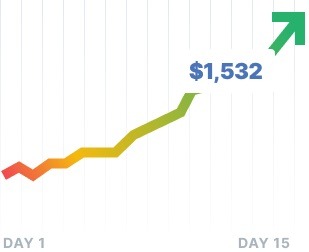
Fast-Trade will help you optimize your product titles
Amazon/Flipkart is a great opportunity for you to sell your products to interested leads. If you want to get the most out of your Amazon product listings, you must optimize your title to drive more leads to your page. At Fast-Trade, we know how to optimize Amazon product listings to help you earn more traffic and conversions for your business. We’re a full-service digital marketing company that specializes in Amazon SEO. Our team of 50+ experts will bring their knowledge and expertise to your campaign. We’ll help you optimize your product listings to produce better results for your campaign. If you’re looking for an Amazon expert that knows how to drive results, look no further than Fast-Trade. In We focus on driving valuable results that help our clients grow their business.
Get started today!
If you're ready to start earning valuable leads through your optimized Amazon product listing, contact us online or call us today at 9875004566 to speak with a strategist! We look forward to helping your business grow! Read the full article
#amazon#ecommerce#efasttrade#fasttrade#listingoptimization#onlinesales#optimizeforsales#productnameoptimization#sales#titleoptimization
0 notes
Text
Saare Jahaan se accha, Hindustan humara -Happy Republic Day!
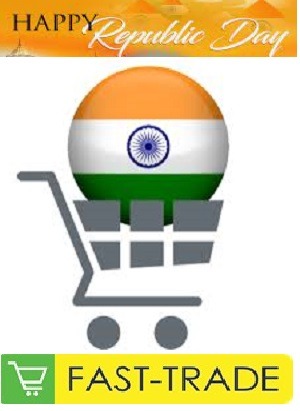
Saare Jahaan se accha, Hindustan humara - let's join hands in keeping the head high of our nation. Happy Republic Day! This Republic Day, let's promise to build a country that will be the ideal place to thrive for our next generation. Wishes From Fast-Trade , https://www.efasttrade.com/
0 notes
Text
Different types of E-commerce Business models in India
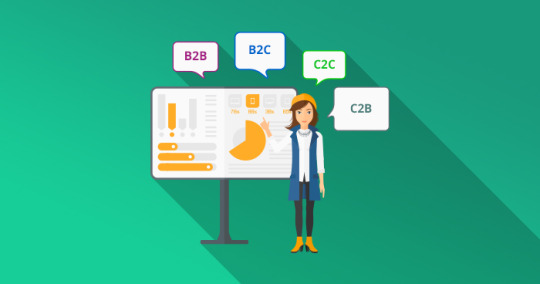
Ecommerce business models are evolving in unexpected ways with the growing demand. If you belong to this fastest-growing industry keep yourself updated on the fundamental business models. If we look at the history of any e-commerce marketplace, there is not a single one that has maintained the same business model that it began with! The most common examples are Amazon and Flipkart, both of them started with selling books and it is known to one and all what place they own in this industry today. Most of the businesses start with an inventory-based model but sooner or later become marketplaces. Let us learn in detail about the various E-commerce business models to get a better understanding of them - Business to Business Ecommerce - (B2B) The B2B model promotes business between businesses via online transactions. This improves the efficiency and effectiveness of the businesses. Bulk order transactions take place in this model, buyers cannot buy single pieces. Usually, a minimum order quantity is involved in such transactions. If the buyers need any customized products, they can request for quotation from the seller. We can classify B2B ecommerce sites as – Vertical B2B E-commerce sites - The sites which deal in a particular industry and its complementary products. Horizontal B2B E-commerce sites - The sites that focus on products across various categories. Business to Consumer E Commerce - B2C In this model, transactions take place between a business and the end customer. They work as virtual stores where a retailer directly sells his products to consumers digitally. In the year 2020 due to Corona, this model grew drastically. As the number of customers in B2C e-commerce business models is quite large, it is a bit complicated in terms of logistics & supply chain. Consumer to Consumer E Commerce - C2C In this E-commerce business model transaction of products and services takes place between consumers. The site is created by a third party, and you can easily register on it, as a single entity instead of a business entity. Where it is simple to be a part of this business model, it faces trust issues. Business to Consumer to Consumer - B2C2C It comes under the category of social commerce which is discussed below. In this mode first, a seller deals with a consumer and then the same consumer resells to another consumer. It is a matter of trust for the end customer as the one they are buying is a non-business entity. It is a kind of method to earn extra income and sellers are expecting to overcome the trust barriers with the growth of social commerce. Direct to Consumer - D2C It is an e-commerce business model in which there is no involvement of any kind of middle party. Direct to consumer model involves sales directly between the manufacturer and the consumer. It enables companies to take full control of their supply chain and to remove external dependencies. As there is no middle party, there are no margin cuts too. It is quite difficult to maintain a complete D2C model in a complicated market like India. Social Commerce Owing to the pandemic in 2020, various types of online business models emerged. The most famous among them is unorganized social commerce. Complete lockdowns led the businesses to move ahead with online selling. As it seemed quite complicated to sell on e-commerce sites, people moved to social media platforms. And, platforms like Facebook; Instagram, WhatsApp blossomed and gave a great opportunity to the micro-entrepreneurs, housewives, and those who didn’t! Drop-Shipping In this model, a seller needs not to own or manage its inventory. All he needs to do is to act as a medium between end consumers and suppliers. Then the supplier ships the product directly to the consumer. The seller then receives its share from the supplier’s revenue. A major disadvantage of drop-shipping is slow shipping speed. The margins are also very thin due to low prices. Private Labels Private labels came into existence when online retailers wanted to own a brand but no capital investment. As a result, they outsourced the manufacturing and then finished products were packed in their branded packaging. White Labels White labels and private labels usually confuse people. White labels are well-established brands having their range of great products. These brands allow other businesses to brand their products as their own. It works as a source of extra revenue for companies that are already doing well in their verticals . If you want to be a master in the e-commerce industry, this article must have helped you to make aware of the various business models. Contact us if you need any kind of guidance or you want to move ahead with any of the above E-commerce business models. Read the full article
#besttypesofecommercebusinesses#comparisonbetweenthreetypesofbusinessmodelinecommerce#differenttypesofecommercebusinesses#differenttypesofpartnershipsinecommercebusinessmodelsbusinessmodels#ecommercebusiness#howmanytypeoffmcgorecommercebusiness#threetypesofbusinessmodelinecommerce#typesofbusinessecommerce#typesofecommercebusinessmodels#typesofecommercebusinesses
0 notes
Text
An Easy Guide to Understand Trademark Registration in India
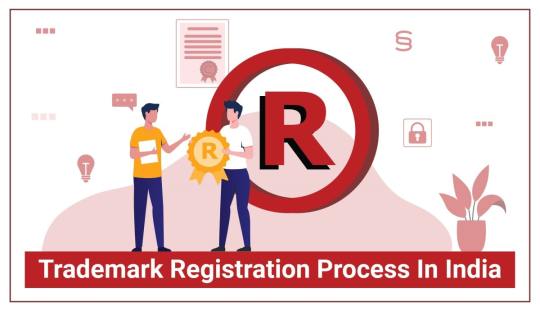
Trademark means the visual representation of your business entity, its related symbols, and colors making it your untouchable asset. It helps a business to differentiate its products/ services from the entities that offer similar products/services. In India, the authority to provide trademarks is with the Controller General of Patents Designs and Trademarks, Ministry of Commerce and Industry, Government of India. Some of the elements which can be trademarked are – - Sound - Logo - Colors - Words - Symbols - Phrases - Images - Initials - Or a combination of all the above elements. There are various benefits that trademark has – - Legal Protection. - It converts your business into an asset, i.e, you can sell your brand name in the future for a price. - Increases the scope of your business in the market due to increased reliability, goodwill, trust and quality, and many more! Before knowing further about trademark, let us understand the procedure of trademark registration - - How to get registered? Step 1- Get a crazy brand name! It is not easy to get your brand name trademarked in India. Here are some of our expert’s tips which you need to keep in mind while looking for a name - - Avoid generic names – they are difficult to get approved! - Try to look for a made-up word or a combination of words because they are easy to get approved. - You can browse different sites that may help you in finding names. You can check whether the name you are thinking is available or taken! Step 2: Get done with the required documents. While working with the trademark application, you will need following details – - Applicant’s name – Name of the person under whose name business entity would be registered. - Define the type of business– Mention it clearly whether your business is a proprietorship, a private limited company, or an individual based. - Identity Proof/ Business ID Proof: The applicant’s ID proof along with the other relevant registration proofs like identities of directors, company address, registration certificate, etc. will be needed. - Complete detail of brand name, logo, and slogan– The brand name you have chosen with the tagline and logo will be required. - Form No. 48 – An affidavit/legal document in which you give the rights to the lawyer who can apply for a trademark on your behalf. Step 3: Submit Your Application If you have opted for manual filing, it will take around 15-20 days to get a confirmation. And, if you are moving ahead with e-filing, it will receive an immediate acknowledgment. After submitting your application you can append the ‘TM’ symbol with your name which denotes that you have submitted your trademark application. When your application is received, it undergoes a process called Vienna Codification. Under this process, the application is sent for codification as per the international standards. - After this process, the registrar checks for any conflicts with any existing name or in terms of the law. The authorities also verify that your chosen name does not affect the sentiments of a particular group of people. - You have to wait for one month to know the results. If your application faces rejection, then you may have to appear before the officer to understand the reasons behind it. You may even file an appeal for the same. - The logo is then published in the Indian Trade Mark Journal. At this point if objects they can raise a dispute over it within 90 to 120 days from the date of publication. - If there is any objection, you have to face it in court else the process is almost done. - After completing the process, the trademark certificate is issued to you. You can now add the ® symbol next to your brand name. It is very important for every businessman to understand the trademark registration process in detail. Make sure to be patient while the process, as it takes around 15-18 months. After being registered, the trademark is valid for 10 years. On expiry you may apply for renewal with the required formalities. For any kind of assistance regarding the trademark registration, feel free to connect with us. Read the full article
#applicationfortrademarkregistration#howtotrademarkregistration#initialtermofregistrationtrademark#procedureofregistrationoftrademark#trademarkindiaregistration#trademarkregistrationcheck#trademarkregistrationinindia#trademarkregistrationonline#trademarkregistrationprocess#whatistrademarkregistration
0 notes
Text
Tips for Amazon Account Health & Management

The Amazon Account Health page provides the sellers an overview of their account’s overall performance. It makes the seller aware of the targets achieved by them and policy fulfillment which is required to sell on Amazon. Amazon reviews the performance of all the sellers regularly and sends them notifications if they miss their targets frequently. Notifications give a chance to the sellers to improve their performance before Amazon takes any crucial step. Many times Amazon immediately deactivates the account of sellers who have poor performance. In case your account gets deactivated, you may try for reinstatement. You can submit an appeal to amend the problems that lead to the deactivation. Let us see how to submit an application/appeal to get the seller privileges back from Amazon - There are three different matrices on which Amazon measures the health of your account that are defined below: The Order Defect Rate: The Order Defect Rate (ODR) is defined as those orders which have one or more defects out of all orders represented as a percentage throughout 60 days. As per Amazon’s policy, sellers who maintain an ODR of less than 1% are eligible to sell on Amazon. If the ODR rises above 1%, the respective account gets deactivated. The ODR of less than 1% results in a good customer experience. Negative feedback – Negative feedbacks add up in the ODR. Amazon does not remove feedbacks which are unwarranted or unresolved. The feedbacks are removed only in the following cases – If it includes indecent language. If it is entirely a product review. It targets the identity of seller personally. If you wish to raise a request to remove the negative feedback, you need to log in to your Amazon seller account central. Removal of negative feedbacks is quite important for the overall health of your seller account. Get in touch with us to know more! A-to-z Guarantee claims – It is protection that Amazon provides to its customers whenever they make any purchase from its sellers. If customers are not satisfied with the product delivered or with the delivery time (delayed) then they can contact Amazon customer support. They can even file a claim against the seller as per the Amazon guidelines. Once the amazon team receives a claim, it investigates the case and asks for complete details from the seller. The seller needs to answer within 3 working days and if they fail to do so, the claim will be granted in the favor of the customer. The respective claim amount will be debited from the sellers' account. A-to-z Guarantee claim rate – It is the number of orders that received an A-to-z Guarantee claim divided by the total number of orders in the relevant period, represented in a percentage format . Following is a list of claims that can affect your ODR – Granted claims no matter who funds the claim. Claims for which order refund has been granted after the claim was filed. Claims for which seller or Amazon canceled the order. Under review claims. And, following is the list of claims that do not affect your ODR - Claims whose status is closed. Claims that are withdrawn by customers. Claims that gives reason “Item not received” which the seller shipped with Amazon Buy Shipping Services. The sellers who work dedicatedly to resolve the order problems of their customers can minimize A-to-z Guarantee claims. Credit Card Chargeback – It is quite similar to an A-to-z Guarantee claim, the only difference is in this case instead of Amazon the credit card issuer owns the authority to process the claim and to make the decision. Possible reasons that may lead to credit card chargeback: If the buyer claims they haven’t received the item. If the buyer claims that he has returned the item but hasn’t received a refund. If the customer received a damaged/defective product. Credit Card Chargeback Rate – It is the total number of orders that received a credit card chargeback divided by the number of orders in the relevant period, represented as a percentage. Every seller should focus on successfully managing its account and if you need any guidance or help in managing your Amazon Seller account, contact us. Read the full article
#amazon#amazonhealth#amazonmanagement#ecommerce#ecommerceaccounthealth#ecommercemanagement#management#onlinemanagement#onlineservices#services#tips
0 notes
Text
Understanding Influencer Marketing at a Glance

Nowadays, social media has become very popular among every age. Let’s understand influencer marketing in simple terms as social media marketing being done by individuals who have exclusive followers and are considered experts in their niche. Recently Influencer Marketing has become a fundament for businesses and even the influencers’ count on it as an income source. If you are thinking to move ahead with this marketing strategy in your business and this article might help you in understanding the different aspects of it and how to make the most out of it. What Is Influencer Marketing? Generally, people consider it as celebrities promoting a product which is not true completely. In reality, an influencer promotes a brand by mentioning them and endorsing their products which improves the brand’s image and value. In return, influencers are rewarded cash or free products. Who are Influencers? Social Media Influencers got a nickname - Influencers. They have dedicated followers – people who like and value their opinions, taste, and love watching and following their lifestyle. The followers get influenced by watching them on social media and make their buying decisions based on it, which helps the brands in increasing their sales. How Influencer Marketing works? Influencer marketing is all about getting an Influencer who will share your products or services with his/her followers but there are certain things that you need to follow while moving ahead with this. A few of them are described below - - Awareness and Traffic One of the most important aspects that shouldn’t be neglected is - brand awareness. Consider it as word of mouth, i.e., getting a positive mention from an influencer and his regular followers will start talking about it as well. This will make people aware about your brand which will be the biggest benefit for you of working with an influencer. For many businesses, it becomes tough to drive enough traffic to the website. It can be done with the help of an influencer who will promote your brand name with a link to the website. You can also ask them to get a backlink from a blog post. This will boost your SEO rating too. - Finding a perfect platform - Finding anything that is perfect is a bit difficult as there is no definition of perfect. Instead, you can look for the most popular platform, and these days the first one that comes to my mind is Instagram. It is a hub of influencers and is mostly used by the younger generation who are most of the time seen buying stuff online. Facebook- a decent option you can choose. Earlier, it was only considered as a personal page but now it has added various features like shopping, marketplaces, and much more. There are various other options also available like YouTube, LinkedIn which have a lot to offer. Get in touch with us to get more help on it. - Deciding the type of content It is quite important to decide the content you want the influencer to post for your brand. Influencers charge different amounts for different types of content so it mostly depends on your budget. But you can try to get the most out of whatever you have if your influencer is amenable. Here is a brief description of different types of content - - Single Post - Influencers take a picture with your product and give your brand a shout-out. - Video promotions. - Reviews by influencers in the form of blog-post. - Contests and giveaways – Influencers create contests and giveaways on their profile. And, many more. - Maintaining good communication with the Influencer- While working with an influencer, it is important to maintain two-way communication. No doubt influencers are creative but your regular inputs and suggestions will keep things on track. So, remember to maintain a good relationship with your brand influencer. I hope after reading this article, you are now familiar with what Influencer Marketing is and how it works. To get more details or to get started with this marketing strategy, get in touch with us. Read the full article
0 notes
Text
Understanding Influencer Marketing at a Glance

Nowadays, social media has become very popular among every age. Let’s understand influencer marketing in simple terms as social media marketing being done by individuals who have exclusive followers and are considered experts in their niche. Recently Influencer Marketing has become a fundament for businesses and even the influencers’ count on it as an income source. If you are thinking to move ahead with this marketing strategy in your business and this article might help you in understanding the different aspects of it and how to make the most out of it. What Is Influencer Marketing? Generally, people consider it as celebrities promoting a product which is not true completely. In reality, an influencer promotes a brand by mentioning them and endorsing their products which improves the brand’s image and value. In return, influencers are rewarded cash or free products. Who are Influencers? Social Media Influencers got a nickname - Influencers. They have dedicated followers – people who like and value their opinions, taste, and love watching and following their lifestyle. The followers get influenced by watching them on social media and make their buying decisions based on it, which helps the brands in increasing their sales. How Influencer Marketing works? Influencer marketing is all about getting an Influencer who will share your products or services with his/her followers but there are certain things that you need to follow while moving ahead with this. A few of them are described below - - Awareness and Traffic One of the most important aspects that shouldn’t be neglected is - brand awareness. Consider it as word of mouth, i.e., getting a positive mention from an influencer and his regular followers will start talking about it as well. This will make people aware about your brand which will be the biggest benefit for you of working with an influencer. For many businesses, it becomes tough to drive enough traffic to the website. It can be done with the help of an influencer who will promote your brand name with a link to the website. You can also ask them to get a backlink from a blog post. This will boost your SEO rating too. - Finding a perfect platform - Finding anything that is perfect is a bit difficult as there is no definition of perfect. Instead, you can look for the most popular platform, and these days the first one that comes to my mind is Instagram. It is a hub of influencers and is mostly used by the younger generation who are most of the time seen buying stuff online. Facebook- a decent option you can choose. Earlier, it was only considered as a personal page but now it has added various features like shopping, marketplaces, and much more. There are various other options also available like YouTube, LinkedIn which have a lot to offer. Get in touch with us to get more help on it. - Deciding the type of content It is quite important to decide the content you want the influencer to post for your brand. Influencers charge different amounts for different types of content so it mostly depends on your budget. But you can try to get the most out of whatever you have if your influencer is amenable. Here is a brief description of different types of content - - Single Post - Influencers take a picture with your product and give your brand a shout-out. - Video promotions. - Reviews by influencers in the form of blog-post. - Contests and giveaways – Influencers create contests and giveaways on their profile. And, many more. - Maintaining good communication with the Influencer- While working with an influencer, it is important to maintain two-way communication. No doubt influencers are creative but your regular inputs and suggestions will keep things on track. So, remember to maintain a good relationship with your brand influencer. I hope after reading this article, you are now familiar with what Influencer Marketing is and how it works. To get more details or to get started with this marketing strategy, get in touch with us. Read the full article
#business#ecommerce#ecommercemarketing#influencer#influencers#influencersmarketing#marketing#onlinemarketing
0 notes